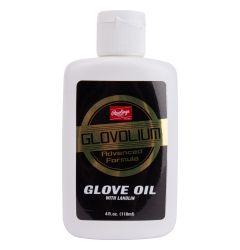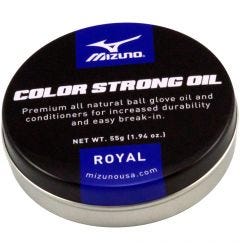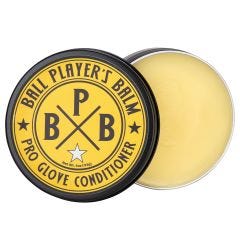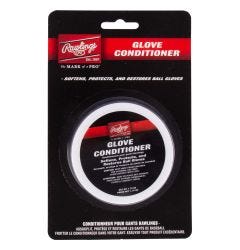Baseball Glove Oil vs Conditioner: Glove Maintenance Guide
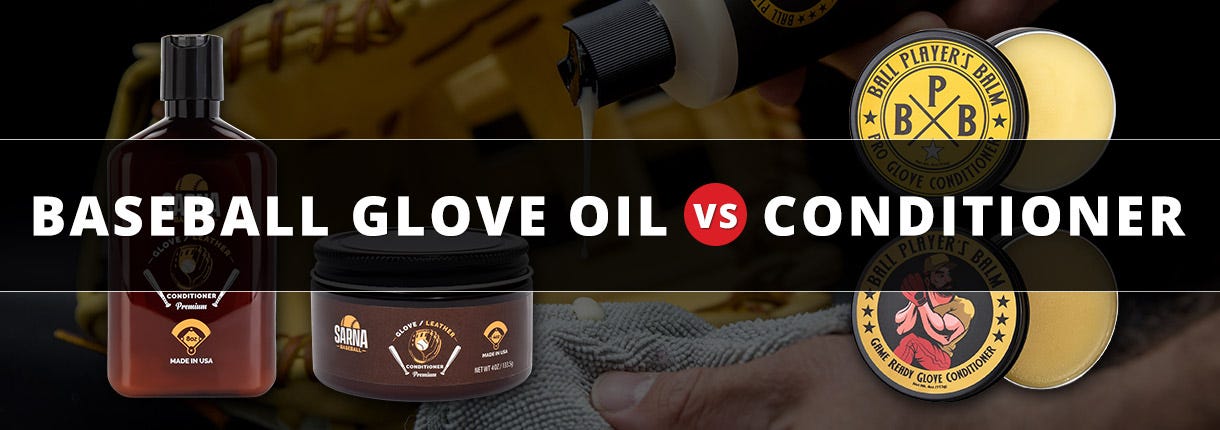
Maintaining a baseball glove is key to preserving its durability and ensuring peak performance on the field. Regular care helps the glove retain its shape, improve durability, and provide a consistent feel, all essential for reliable gameplay. From cleaning and conditioning to proper storage, taking the time to care for your glove prevents damage. It extends its lifespan, allowing players to perform at their best season after season.
In this article, we will cover:
What is Glove Oil?
Glove oil is a specially formulated product designed to condition and preserve baseball gloves, ensuring they remain flexible and durable. Typically composed of natural oils, lanolin, or synthetic conditioners, it penetrates the leather to maintain its softness and elasticity. Glove oil plays a vital role in the care and longevity of a glove, making it an essential tool for players.
- Softens Leather: Prevents the glove from becoming stiff or brittle.
- Speeds Up Break-In: Helps achieve the ideal flexibility and shape quickly.
- Maintains Durability: Protects the leather from cracking and drying out over time.
- Enhances Performance: Keeps the glove supple for better grip and control.
What Does Glove Conditioner Do?
Glove conditioner is a leather care product designed to moisturize and preserve baseball gloves, ensuring long-term durability and performance. Unlike glove oil, which primarily softens and aids in breaking in the glove, the conditioner focuses on hydrating the leather to prevent cracking and extend its lifespan. Its formula often contains a blend of natural oils, lanolin, beeswax, and other conditioning agents that deeply nourish and protect the leather.
- Hydrates Leather: Restores moisture to prevent dryness and cracking.
- Preserves Longevity: Protects against wear and tear over time.
- Conditions and Maintains Texture: Keeps the leather soft and pliable without making it overly greasy.
- Provides Protective Layer: Some conditioners include waxes to shield the glove from dirt and water.
Choosing Between Glove Oil and Conditioner
| Scenario | Glove Oil | Glove Conditioner |
| Breaking in a new glove | Soften leather quickly for faster break-in | Provides light softening but is less effective for rapid break-in |
| Restoring dried-out leather | Adds some moisture but may not fully restore | Deeply hydrates to rejuvenate dried leather |
| Maintaining glove shape | Keeps leather soft and flexible | Offers long-term conditioning to maintain shape and prevent stiffness |
| Protecting against damage | Minimal protective qualities | Often includes waxes to shield against dirt and water |
| Preventing cracking over time | Helps delay cracking with periodic use | Superior for ongoing prevention of dryness and cracking |
| Players looking for a quick fix | Ideal for immediate results | Best for long-term care and preservation |
Steer Hide Leather For Baseball Gloves
Steerhide leather is one of the heaviest leather options available on a glove. This gives the glove high levels of quality and durability but comes at the cost of a long break-in period. Steerhide leather is seen on many gloves positioned at high school and college players such as the Rawlings Heart of the Hide Series.
Baseball Gloves Made From Synthetic Leather
Synthetic leather is used for gloves aimed at players just starting their baseball journey. For these gloves, both quality and durability take a backseat to ease of use and a low price point. Synthetic leather gloves are nearly game-ready right out of the box and have features that cater to young players like adjustable velcro wrist straps. If you are shopping for a glove for a young player, a helpful guide is our article on How to Size a Baseball Glove for a Kid.
What is the Best Type of Leather for Baseball Gloves?
| Type of Leather | Player Level | Pros | Cons | Price | Example Glove |
|---|---|---|---|---|---|
| Full-Grain Leather | High School + | Durability | Long Break-In | $$$$ | Rawlings Heart of the Hide ColorSync 8.0 PRO204-2SBC 11.5" Baseball Glove |
| Kip Leather | High School + | Lightweight | Price | $$$$ | Marucci Capitol 11.75" Baseball Glove - Camel/Columbia - 2024 Model |
| Cowhide Leather | Youth | Fast Break-In | Durability | $$ | Franklin CTZ5000 22416 11.5" Baseball Glove - Black/Chrome |
| Steer Hide Leather | High School + | Durability | Long Break-In | $$$ | Marucci Ascension 43A2 11.5" Baseball Glove - 2023 Model |
| Synthetic | Beginner | Fast Break-In | Durability | $ | Franklin Shok-Sorb Series 10.5" T-Ball Baseball Glove |
Best Leather for Baseball Gloves - Frequently Asked Questions
What is the best leather for beginner baseball players?
At younger ages, quick break-ins and comfort are prioritized to get athletes playing as soon as possible. For this reason, synthetic leathers are preferred as they do not require to be broken in. Gloves are game-ready right off the shelf.
How long does it take to break in a full-grain leather glove?
If you are the type of player who just likes to play catch to break in a glove, it can take several weeks to fully break in. If you take time to apply conditioner, do mallet work, or catch off a machine, you can break in a glove in a few days.
Why is kip leather more expensive?
Kip leather comes from younger cattle which gives the leather a lighter weight and increases stiffness over steerhide. It is seen as a premium leather, especially if it is Japanese Kip leather.
Are there any eco-friendly leather options for baseball gloves?
At younger ages, synthetic leather is popular due to its low cost and easy break-in. However, this leather is not suited for use at the older ages. While there are no popular leather alternatives, you could choose a glove that incorporates other materials to reduce the use of leather. For example, the Rawlings REV1X uses noticeably less leather than traditional Rawlings gloves. Emery gloves with the Cordura backing also fall into this category.
How can I extend the lifespan of my leather baseball glove?
Care for your glove! Do not leave it in hot places like car trunks where the leather can dry out. If the glove gets wet, ensure it dries slowly and recondition the leather with conditioner. Finally, avoid shoving it in baseball bags where the pocket and shape can get damaged. For more info, consider reading our Complete Glove Care Guide.
How many baseball gloves can be made from one cow?
Depending on the style of the glove being made, one cow can produce 20-24 gloves. For example, Nokona makes 10 gloves from each hide. Since there are two hides per cow, they can produce 20 gloves.




